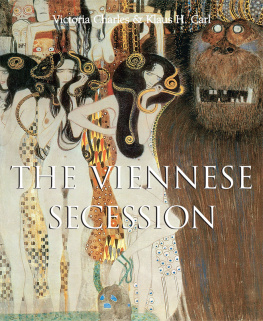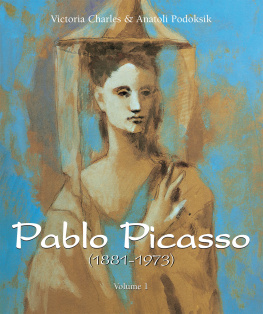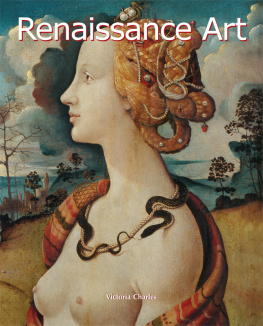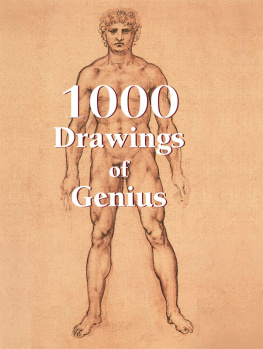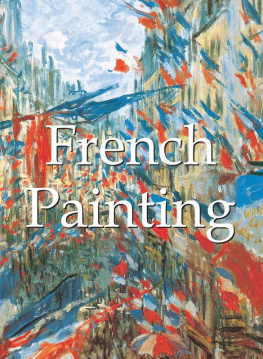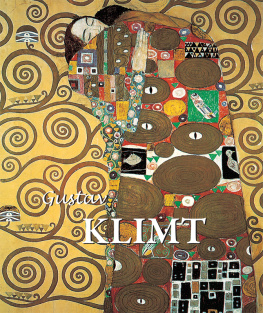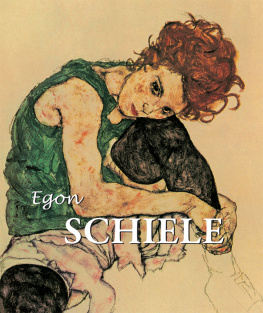Author:
Victoria Charles
Klaus H. Carl
With detailed quotations from Hermann Bahr and Ludwig Hevesi
Layout:
Baseline Co. Ltd
61A-63A Vo Van Tan Street
4 th Floor
District 3, Ho Chi Minh City
Vietnam
Library of Congress Cataloging-in-Publication Data
Carl, Klaus H.
[Wiener Secession. English]
Viennese Secession / Klaus H. Carl. -- 1 st ed.
p. cm.
Includes bibliographical references and index.
ISBN 978-1-84484-845-4
1. Wiener Secession. 2. Art, Austrian-Vienna-20 th century. I. Title.
N6494.W5C3713 2011
709.4361309041--dc23
2011028283
Confidential Concepts, worldwide, USA
Parkstone Press International, New York, USA
Victor Horta/Droits SOFAM - Belgique (pp. )
Hector Guimard (pp. )
(p. 189)
(p. 192)
All rights reserved.
No part of this publication may be reproduced or adapted without the permission of the copyright holder, throughout the world. Unless otherwise specified, copyright on the works reproduced lies with the respective photographers, artists, heirs or estates. Despite intensive research, it has not always been possible to establish copyright ownership. Where this is the case, we would appreciate notification.
ISBN: 978-1-78310-394-2
Victoria Charles & Klaus H. Carl
The Viennese
Secession

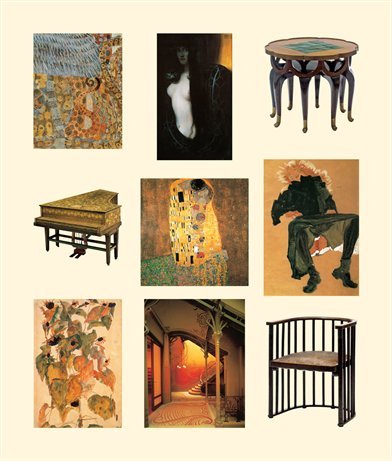
Table of contents

Charles Robert Ashbee, Chimneypiece,
executed by Arthur Cameron for the Magpie and Stump (Pub),
37 Cheyne Walk, London, 1893.
Plain, repouss and enamelled copper tiles, 215 x 201.5 cm .
Victoria and Albert Museum, London.
PREFACE
To write a text on the Viennese Secession an art movement that, despite its short creative period of barely ten years, had an enormous impact in the development of modern art without consulting the contemporary witnesses of that period would be a futile venture. For this reason, this book will feature the writing of two contemporaries of the Secession artists, both believable and competent columnists whose testimonies are as relevant today as they were in the early 20 th century. Excerpts from their commentaries have been carefully translated from the variety of German that was used before the Second Orthographical Conference in 1902. The two experts in question are Hermann Bahr and Ludwig Hevesi.
The Austrian Hermann Bahr, born 1863 in Linz, was a poet, outstanding essayist, influential art critic, and expert of contemporary literary movements from naturalism to expressionism, as well as one of the most important comedy authors of his time. Furthermore, he was a spokesman for Jung-Wien (Young Vienna), a group of writers and literary critics, who called themselves Viennese coffeehouse writers and used Die Zeit, a weekly literary magazine owned and published by Hermann Bahr between 1894 and 1904, as a mouthpiece for their ideas. He lived for over twenty years in Berlin, where he mainly worked with theatre manager, director, and actor Max Reinhardt (1873-1943). After two decades in Berlin, he left Germany for Austria to work in Salzburg and Vienna. In 1922, he returned to Germany to settle down in Munich, where he died twelve years later. Beyond his collection of critical essays and his activities as playwright of comedies, he also composed several works of prose and drama. To list every of Bahrs accomplishments would go far beyond the scope of this preface.
Ludwig Hevesi (1842-1910), born under the name Ludwig Hirsch in the Austro-Hungarian town of Heves, was a journalist and writer. He began his professional career in a Hungarian daily newspaper when he was 24-years-old and was shortly after promoted to report for the arts and culture section of the Viennese Fremdenblatt. During the reign of Franz Joseph I (1830-1916), ruler of the multi-ethnic Austro-Hungarian Empire, Hevesi worked especially for the Secession as columnist and art critic. He once wrote:
[...] Indeed, there is no guidebook to the Secession. That was my response when a young art enthusiast, confronted with the first success of the new movement, asked me whether there was a book that he could consult to better understand the uncomfortable paradigmatic shift that he was faced with. If someone would put this question forward today, I would recommend the following book [].
The Viennese Secession was not a singular event that came from nowhere. The movement had precursors and, naturally, also successors, and soon other, younger artists from other associations started rebelling against the rigid predominance of the established and generally rather conservative artists, who confronted all these new ideas for the training and education of artists with an uncompromisingly defensive attitude. Having no chance to exhibit their works together with already recognised artists their work didnt usually clear the stage of pre-selection that was supervised by a jury which was evidently composed of these very artists thus deprived them often of the opportunity to find buyers for their work.
In order to generate a holistic depiction of the Viennese Secession, a brief overview of the most important precursors of the movement is necessary.

Ditha Moser, Folding calendar, 1907.
Donation from Oswald Oberhuber,
Collection and Archive, Universitt fr
angewandte Kunst, Vienna.
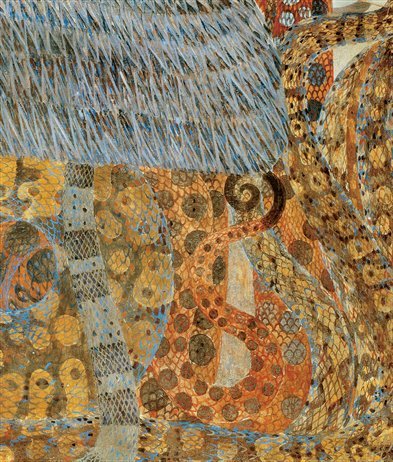
Gustav Klimt, Gnawing Sorrow
(detail from second panel of The Beethoven Frieze), 1902.
Casein on plaster, height: 220 cm .
Secession, Vienna.
VIENNA IN THE SECOND HALF
OF THE 19 TH CENTURY
Even though the Viennese upper class were passionately fond of dances, the opera, theatre, and music, they remained extremely conservative. Strict Catholicism accompanied by rigid social morals made them seem, at least in appearance, unmoving and close-lipped. While the rest of society was only too happy to embrace all sorts of pleasures then deemed sensual, for example the waltz, the so-called good society rejected any topic that was unaesthetic, erotic or even mildly sexual. Thus different standards were applied to different strata of society, which is telling about the dominant concept of morality in Vienna in particular, and the Austro-Hungarian Empire in general, at the end of the 19 th century.
In these decades, Vienna was a city at the zenith of its power and influence. Kaiser Franz Joseph I was the monarch of an empire of over fifty million people, encompassing several dozen constituent kingdoms and duchies from Bohemia to Serbia. However, at the end of World War I, at the beginning of 1918, the empire only had several months of existence left. With Kaiser Karls failed attempt to conserve the empire in the form of a federal state, Austria suddenly became a small nation of seven million inhabitants, of which three million lived in and around Vienna. Barely twenty years later, Nazi Germany under Adolf Hitler (1889-1945) would annex the Republic, thus sealing its fate in the tumultuous years to follow.

